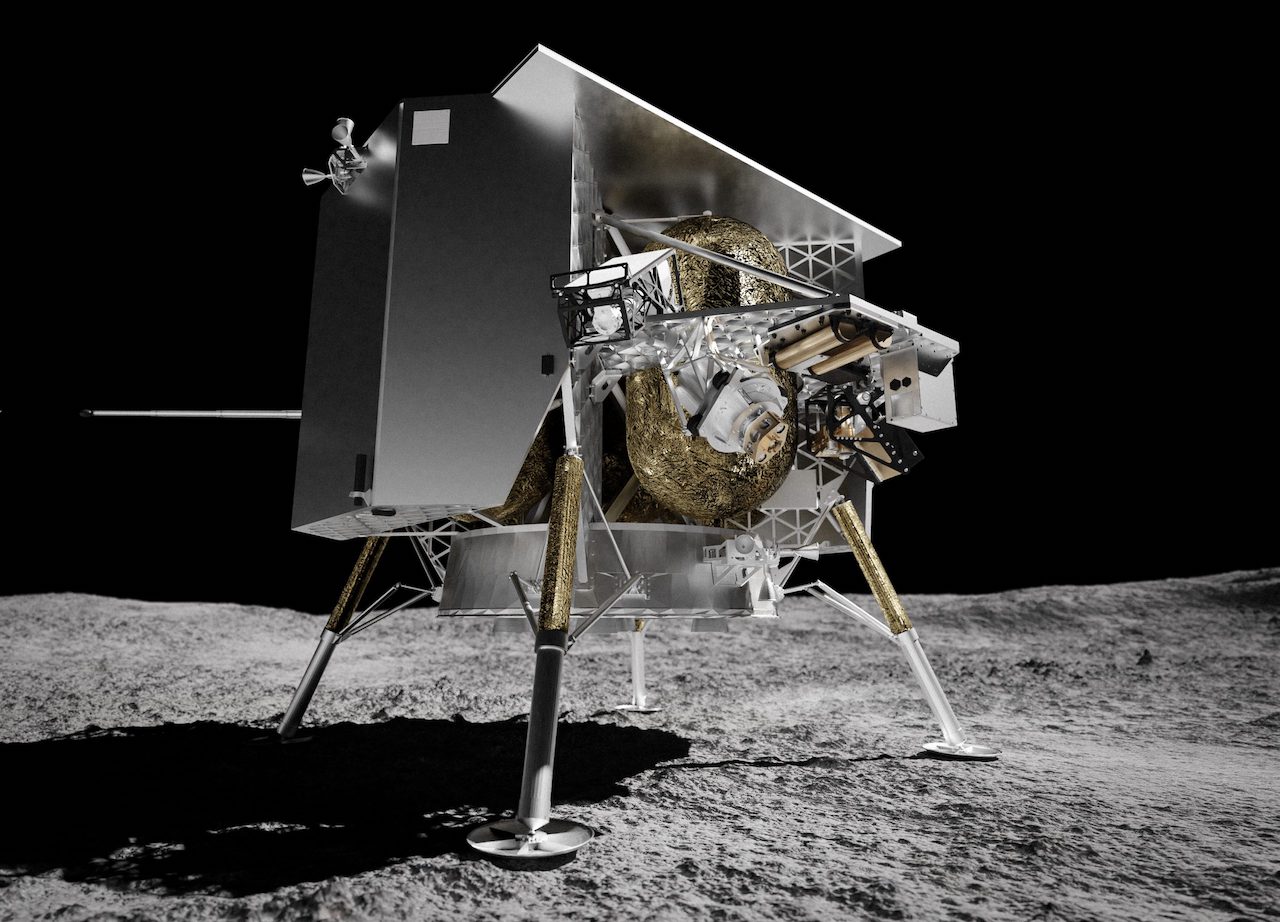by Christophe Bosquillon

By nighttime stateside, early European/Middle East/Africa morning today, and mid-day in Asia, the successfully launched Astrobotic Peregrine lander was confirmed having run into problems terminally dooming Mission 1. Astrobotic’s confirmed the issue reporting on their social media and press releases. And like with any failure, let’s take a healing look at facts and lessons learned. The first lesson is the obvious one: yes, space is hard.
Risk factors
United Launch Alliance (ULA) was set up in 2006 as a joint venture between Boeing and Lockheed Martin. It developed the Delta and Atlas launchers that flew more than 150 missions in Earth orbit. This time around January 2024 marked the inaugural flight of its 3rd launcher, named Vulcan Centaur (more Greco-Roman mythology than Star Trek). ULA’s key goal was for Vulcan to flight test certifications: it succeeded in reaching this milestone, which will now allow ULA to launch more than 70 missions of which about 80% are allocated to its 2 dominant customers, the Amazon Project Kuiper’s constellation, followed by the US Space Force.
What was the catch for ULA? An inaugural launch is inherently risky. ULA couldn’t involve valued payload from its most important customers Amazon and the USSF. ULA needed a customer willing to shoulder some of the risk with its own hardware, transfer some of the risk to third party payloads, and then sort out their own insurance coverage. Astrobotic became that convenient customer. Astrobotic acting itself as one of essential contractors in the NASA Commercial Lunar Payload Services (CLPS) program, there was not even the shadow of a doubt that NASA would balk at the deal. Parties understood the risks.
The due diligence and risk evaluation that led to the ULA-Astrobotic partnership implied a certain degree of confidence from Astrobotic in ULA’s ability to not fail its inaugural launch (as it may happen, if you consider that any inaugural launch after n test launches is sometimes test launch n+1). While ULA needed Astrobotic as a customer for its certification deal, it didn’t really need the Peregrine Mission 1 to succeed to get what it wanted. Big difference.
On the other hand, Astrobotic needed to minimize the contribution of the launch phase to the overall risk factors. The apparently mitigating risk factor came from acknowledging that Vulcan launcher design wasn’t born out of the blue: it finds its roots in components from the Atlas and Delta rockets, with flight systems that got battle hardened over more than 70 missions. And it turned out that the countdown to launch, lift-off, and flight of the Vulcan Centaur went so flawlessly that it looks almost surreal. Even after separation from Peregrine, ULA continued to perform tests on its launcher, further validating future mission objectives and gathering data for extended-duration missions, demonstrating boldly to its customers its ability to perform based on a legacy design. Case closed.
Peregrine after separation from Vulcan Centaur
So far so good. After launch, Peregrine had reached the high seas by entering its planned lunar transfer orbit. Because initial communications and system checkouts appeared positive, you’d be excused to expect the ship to make it to destination, and to mostly worry about the ship not crashing on arrival. However, several hours after the launch, Astrobotic reported first a propulsion anomaly, preventing a stable sun-pointing orientation. Then it became apparent that the nature of the anomaly resided within the propulsion system. Mission control succeeded in fixing the sun-orientation problem and reload the batteries, thus giving a new, albeit short lease on life to the mission. But that problem was only a symptom. When the root cause was confirmed as a propellant leak, then it became evident the mission’s best hope was to make it another 40 hours at best. By which time, having exhausted its propellant reserves, Peregrine Mission 1 wouldn’t be able to land.
Peregrine Mission 1 carried a rather diverse payload, including a large array of NASA scientific instrumentation. We will not cover here the controversial aspects linked to some components of the payload. Suffice to say that the business rationale of putting high value payload in a ship that not only hasn’t demonstrated its ability to not crash on arrival, but isn’t able to make it “onshore” without issues and propellant leaks, might be something to ponder for future missions, from any country and whichever public or private entity.
NASA CLPS and “shots on goal” philosophy
Despite the Peregrine Mission 1 failure, NASA seems to be taking all this in stride, which is probably the optimal attitude now: gather data, see, and wait. From the recent declaration by Joel Kearns, deputy associate administrator for exploration at NASA’s science mission directorate, it seems that NASA does accept the risk and the cost linked to the fact that not every private sector lander will be able to soft-land on the Moon or even just get there without major problems, especially on first attempts. This reflects Thomas Zurbuchen’s, then the associate administrator for science at NASA, famous “shot on goal” hockey analogy — each CLPS mission is like a shot on goal: if the costs are lower, there will be more shots on goal even though not all of the shots will score.
Implications for future US lunar missions
ULA, NASA, and Astrobotic have reconfirmed their commitment to the long-term goals of lunar and space exploration. ULA sees Vulcan Centaur as their most critical launcher for constellations and military customers (and a direct competitor to Space-X). NASA is willing to take the risk of establishing a strong private contractor’s industrial base, with dedicated partners that will learn and keep improving. And Astrobotic will continue to collaborate with NASA on CLPS missions.
However, necessary adjustments will be needed down the road between NASA and its private sector partners. While NASA remains committed to CLPS, future missions must take into consideration not only technical risk factors but costs. When Astrobotic moves forward with the much larger Griffin lander, also involving a NASA rover, the stakes will be much higher. Therefore, that step might require reconsideration and adjustments of mission schedule, after fixing current problems.
ULA, the US Space Force, NASA, Astrobotic, and many others, will carry on. What happened will happen again, sometimes better, sometimes even worse. This is not the end of the runway for Astrobotics, nor for any other US and international companies going through similar rough terrain. In fact, there is a sentiment of relief, now that the odds have caught up, to know that everyone is back on the drawing board, learning lessons to do better next time. Space is hard, and contrary to e. g. software, you do not debug it all on the fly nor put up with a “minimum viable product”. You need to get it absolutely 100% right, or else. Every country and company will keep going through this. What is interesting in the ULA pattern is the blend of breakthrough innovation and battle-hardened technology, that serve both civilian and military market. Maybe we even need to reevaluate the whole “new space” mantra. There are business merits to go for total disruption and reinventing everything from scratch, and for some companies, it will work. But in an industry where the ability for hardware to execute a mission from beginning to end relies on everything working perfectly well down to the last nut and bolt, there might be some merit for innovative companies to rely on a larger legacy industrial base.

Christophe Bosquillon has a diverse professional background, having operated globally with a focus on the Indo-Pacific region. His experiences in Japan, the Koreas, Taiwan, China, ASEAN, India, Russia, and Australia have given him a deep understanding of the multipolar realpolitik of our world under the Pax Americana. With a background in engineering, trade, and foreign direct investment in industries relevant to Space Resource Utilization (SRU), such as mining, transportation, energy, manufacturing, agrifood, environment, and digitalization, Chris is committed to developing SRU value chains that benefit the Earth. As an executive, owner, writer, and founder of Autonomous Space Futures Ltd, Chris has extensive experience in collaborative policy crafting and works to develop space business and governance models relevant to society. He is a member of NGOs that provide input to the United Nations Committee on the Peaceful Uses of Outer Space (UNCOPUOS) legal subcommittee Working Group on Space Resources. Chris contributes to regulatory clarity on appropriation, priority, sustainability, and sharing in a way that balances national interests with civil society inclusion, provided a transparent due process is followed. When advocating for access to technology and space for the Global South, Chris believes that emerging space powers’ participation in space markets must be commensurate with their interest and involvement in international space politics. He believes that their ability to develop sovereign domestic capabilities with spillover potential is also essential. Chris is keen on ‘Peace Through Strength’ diplomacy and deterrence-based security as enablers of secure space access. He supports sovereign cislunar space situational awareness as mandatory for freedom of circulation in the space domain and deconflicted cooperation on the Moon
 SpaceWatch.Global An independent perspective on space
SpaceWatch.Global An independent perspective on space




